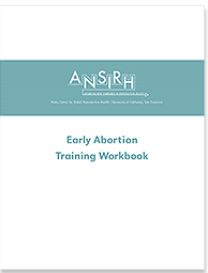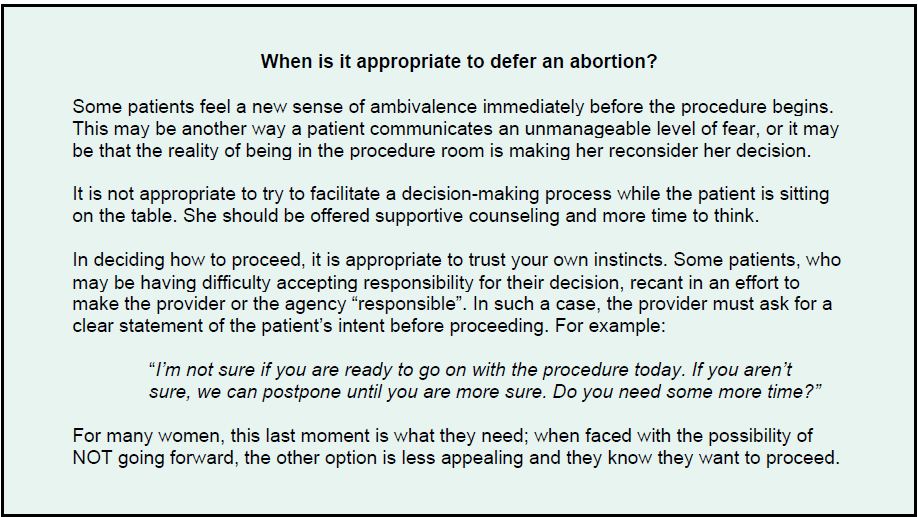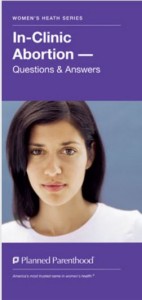 A training manual on abortion tells doctors and clinicians to avoid using the word “baby” and suggests substituting “fetus” or “pregnancy instead.
A training manual on abortion tells doctors and clinicians to avoid using the word “baby” and suggests substituting “fetus” or “pregnancy instead.
The Early Abortion Training Workbook published by Advancing New Standards in Reproductive Health (ANSIRH) which is staffed by former Planned Parenthood and National Abortion Federation (NAF) employees, describes their training this way:
“ANSIRH’s Early Abortion Training Workbook was developed for use in a clinical setting where an experienced trainer or provider is available to lead a discussion of its didactic context and exercises. It is intended to help clinicians learn to identify key elements of informed consent counseling, recognize major psychosocial issues of importance for women who seek abortions, understand the basic steps involved with first-trimester vacuum aspiration abortions and early medical abortion service provision, and identify common complications related to first-trimester abortion care.”
Pro-lifers often point out that abortion is a money-making industry selling abortions to vulnerable women in their most difficult time of need. It is true that abortion providers will claim that they only do abortions on women who want them, but it is also true that they have developed clever marketing skills that not only bring the girls in for the abortions, but also facilitate the “closure of the sale.” This is illustrated well in the ANSIRH training manual below which instructs abortion providers how to respond to an ambivalent patient:

“In deciding how to proceed,” the training manual states, “it is appropriate to trust your own instincts. Some patients, who may be having difficulty accepting responsibility for their decision, recant in an effort to make the provider or agency ‘responsible.’ In such a case, the provider must ask for a clear statement of the patient’s intent before proceeding. For example:
“I’m not sure if you are ready to go on with the procedure today. If you aren’t sure, we can postpone until you are more sure. Do you need some more time?”
Then, the all-knowing abortion provider is very much aware that the woman, who is agonizing over her decision will opt to go through the abortion. In fact, the training manual tells providers, “For many women, this last moment is what they need; when faced with the possibility of NOT going forward, the other option is less appealing and they know they want to proceed,” they write.
In this training manual, ANSIRH also instructs their abortion providers to be careful what words they use … or… for that matter don’t use.
Words to avoid when a woman seeks an abortion: BABY.
The manual suggests that it would be best for abortionists to use the term: FETUS or PREGNANCY:

However, if the abortion bound patient decides to use the word “baby” the manual suggests that it is most likely because the pregnant woman may be “feeling guilt or regret.” And, if the abortion patient wants to know what happened to their “baby” the manual tells those they train to respond like this, “I examine the pregnancy tissue to make sure that you are no longer pregnant.”

Then, if the patient asks if the abortion will “hurt the baby,” trainees are advised to say, “At this point in the pregnancy, the nervous system is still in a very early stage of development. Most brain cells are not developed and there is no pain.” This set statement is given to women despite studies that evidence the possibility of fetal pain as early as 5.5 weeks. Fetal development – including the presence of measurable brain waves at 6 weeks is completely ignored or denied.
It would appear that this kind of manipulative and inaccurate training is widely used. The use of the term “pregnancy” in place of the rightful term “baby” when describing or counseling for an abortion can be seen across a broad spectrum of abortion businesses.
And in a brochure published by the National Abortion Federation, the term “pregnancy” is substituted for “baby” as it “attached to the uterus.”
“A medical abortion uses two medicines to end a pregnancy. The first one (either mifepristone or methotrexate) weakens the attachment of the pregnancy to the uterus.”
A pregnancy can attach to the uterus?
The Feminist Women’s Health Center abortion clinic chain tells women their D+C abortions are used to “remove the tiny pregnancy.”
“If you are at least 6 weeks by ultrasound, you can choose to have a surgical abortion, in which the cervix is dilated and suction aspiration is used to remove the tiny pregnancy.”
The Philadelphia Women’s Center abortion clinic refers to the preborn child in a second trimester abortion as the removal of a “pregnancy” as well:
When the dilation of your cervix is complete you will be taken to the operating room, and a Certified Registered Nurse Anesthetist (CRNA) will administer IV sedation. The surgery will begin when the physician inserts a speculum into your vagina in order to view your cervix. If necessary, the physician will then dilate (open) your cervix more by inserting thin, metal rods, one by one, into the opening of the cervix. These rods, also called dilators, gradually increase in width. The physician will then use surgical instruments and vacuum aspiration (suction) to remove your pregnancy. The surgery usually takes approximately 10 to 20 minutes. After your surgery, you will be monitored in our recovery room until you are medically cleared to go home, usually about 45 minutes.
The Houston Women’s abortion clinic also fails to use the term “baby” when it tells women they “remove the pregnancy from the uterus”
“Most commonly known as vacuum aspiration, is performed after we give you oral (vicodin and valium) and IV medication (valium and stadol). A very small plastic tube about 1/10 of an inch is used to remove the pregnancy from the uterus with gentle vacuum. The way Dr. Rosenfeld performs a vacuum aspiration usually takes less than one minute with very little to no pain.”
Planned Parenthood used the term “remove the pregnancy” rather than “baby” in a pamphlet which describes an early surgical abortion:

“When your cervix is stretched open enough, the contents of your uterus (womb) are taken out with suction. Suction is used by putting a small plastic tube into your uterus and connecting it to a hand-held or electric suction machine. Surgical tools may be put into the uterus through the opening in the cervix. The way it is done will depend on how long you’ve been pregnant. You may feel cramping during and after the abortion as your uterus gets smaller. Your doctor may also use a curette (a thin surgical tool) to remove the pregnancy. What has been removed will be looked at to help make sure the abortion is finished.”
An example of this kind of spin was described by a Planned Parenthood employee who claims she aborted “the Pregnancy” at Planned Parenthood. In a video message, Shawanna says Planned Parenthood gave her three options:
“I told them my situation – they gave me three options: Keeping the pregnancy, have an abortion or adoption. I chose abortion. It was the best option for me at the time…it was the best decision.”
Shawanna, who is promoted as a patient, even though she works for Planned Parenthood, claims that after she aborted “The Pregnancy” her life became better because she got to finish going to school and became a certified nurses assistant who went on to work for the abortion giant.
On the Planned Parenthood promotional video, Shawanna adds that she got pregnant again and was really happy the second time around and this time she kept “The Pregnancy.” She emphasizes that her abortion was good and states that she could not have imagined what her life would have been like if she “kept the pregnancy back then.”







